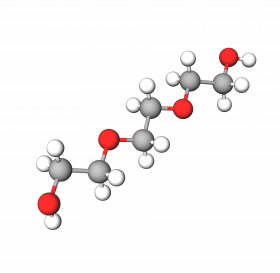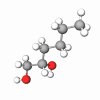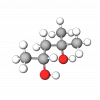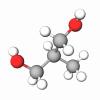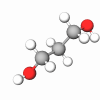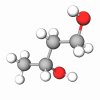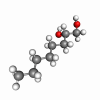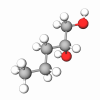Triethylene glycol (TEG) is a straight-chain diol, a colorless, odorless, non-volatile hygroscopic liquid at room temperature. It is characterized by two hydroxyl groups and two ether linkages, which contribute to its high water solubility, hygroscopicity, solvent properties, and reactivity with many organic compounds.
Traditionally it has been used for many of the same applications as diethylene glycol. Increasingly, however, it displaces diethylene glycol in many of these applications because of its lower toxicity.
It is widely used as a humectant for tobacco, composition cork, textile fibers, paper, leather, and adhesives. Triethylene glycol is listed in Council Directive 82/229/EEC as an approved softening agent for regenerated cellulose film intended to come into contact with foodstuffs. Levels of up to 27% by weight, calculated in relation to the quantity of anhydrous regenerated cellulose film may be used.
As a solvent, triethylene glycol is a component of steam-set printing inks, it is a good solvent for nitrocellulose resins and various other resins and gums. Triethylene glycol is used in a commercial process to selectively recover high-purity aromatic fractions from petroleum distillates.Thanks to its antiseptic property and low toxicity, TEG is an effective disinfectant against bacteria, viruses, and fungi (including spores). In personal care applications it is used as a potent preservative and booster for other antiseptics in complex ingredients, prolonging shelf-life and usage period after opening the packaging of the product.
Other uses
Strong hygroscopic properties and ease of regeneration have made triethylene glycol the desiccant of choice in most installations which remove water from natural gas thereby preventing the formation of hydrates in long-distance transmission lines.
It is also employed in small packaged drying plants located at the gas wellhead in order to eliminate the need for line heaters in field gathering systems. It is also used in air-conditioning systems where dehumidification without cooling of the air is desired.
When vaporized under proper conditions in specially designed equipment for air sanitation it aids in the control of bacteria and virus content in the air in public buildings. Provided corrosion inhibitors are present, triethylene glycol may be used in heat transfer fluids and is particularly suitable for high-temperature applications.
Derivative uses
Ester derivatives of triethylene glycol are important plasticizers for polyvinyl butyral resins, nitrocellulose lacquers, vinyl and polyvinyl chloride resins, synthetic rubber compounds, and cellulose esters. Fatty acid derivatives are used as emulsifiers, demulsifiers, and lubricants.Polyester derivatives are useful as low-pressure laminates for glass fibers, cloth, and paper. Alkyd resins derived from triethylene glycol are used as laminating agents and in adhesives.
